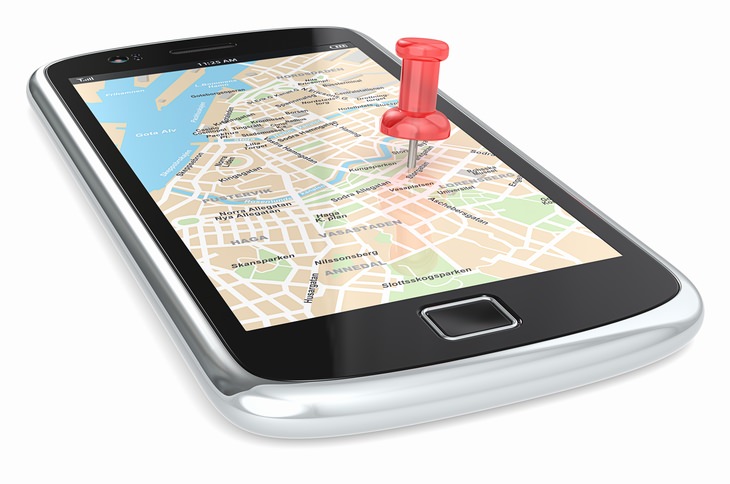Raise your hand if a similar scenario ever happened to you: you walk into a store, consider purchasing a coat but then decide against it and move on. The next time you check your phone, it’s full of ads for coats. You are not alone in feeling a little creeped out. It almost feels as though someone out there can read your mind. Well, not quite. While online shopping is becoming more and more popular, brick-and-mortar businesses are working extra hard to cater to customers and stay relevant.
For that purpose, there are several tracking techniques used by retailers to gather data on customers. They want to know demographic information like gender, age, location, the type of products you’re interested in, the list goes on. They can’t read your mind, but they are certainly trying to come as close as possible. The customers are supposedly informed, but who really takes the time to read the fine print in privacy policies? Many of us often don’t even know what we are consenting to.
To make things easier, here is a list of 5 ways in which retailers are tracking your real-life consumer behaviors through your cellphone.
1. Connecting to the Wi-Fi
Many stores offer free Wi-Fi connection. When you log in, you often need to go through a page called ‘captive portal’. At that stage, you are asked to provide personal details such as your email address and to agree to the terms and conditions. Sometimes, you can choose to log in by using a social media profile like Facebook.
By doing all of that you’re essentially agreeing to active tracking. The store will have access to your browsing history and your location (it can get as specific as how long you spent in the dairy aisle). If you chose to log in through Facebook, the information becomes even richer. This data is gold for target ads.
2. Installing Cookies
Cookies are small files installed on your device when you connect to a Wi-Fi or use an app/website. The cookies can then be used to monitor your browsing habits – for example, what’s in your shopping cart of an e-commerce site. That way, the business can continue gathering data long after you’ve left the store and logged off the Wi-Fi.
After the General Data Protection Regulation (GDPR) was enacted in Europe in May 2018, most websites included a pop-up disclaimer letting you know they use cookies and asking for your agreement to do so. You can even read their ‘cookie policy’, but let’s be honest, most of us don’t.
3. The Store’s App
The most obvious way to track the customers is through the retailer's app. You provide the app with your information upon signing up and basically give the business permission to make use of it. There is a myriad of services that can prompt you to download and use the app – coupons, sales on products you’re interested in, promotions only available for app users.
Macy’s app will even let you upload a picture of your face to ‘try on’ beauty products. While some of these offers and services truly are beneficial to the consumers, it’s important to remember that it’s a two-way deal and to be aware of what you are consenting to on your part.
4. Beacons
The issue of beacons was discussed widely in a New York Times article published last summer. Many retail stores put up ‘beacons’, powered by Bluetooth. These beacons emit signals, which are picked up by the store’s app even when it’s closed. The app then knows your exact location.
When paired with other available footprint information about you, companies are able to build a rich profile and have the app send you coupons and offers about products in physical proximity that you’re likely to buy. Sometimes, the ad will be sent to you after you leave – prompting you to come back. This is called retargeting.
Bluetooth beacons can track your locations to a distance of about 50 meters (164 feet). That means they can detect your mobile phone even if you just walk by a store without even going inside!
5. Passive Tracking
In case you haven’t downloaded that business’ app, there is still a way for them to track your movement around the store. Every device which connects to the internet has a Media Access Control (MAC), which is a serial number unique to that device. Your phone is constantly sending out signals to try and find Wi-Fi or Bluetooth to connect with.
Many stores install sensors that pick up those signals and extract the MAC number, through which they can know exactly where the device (and its owner) is located. Because the MAC is connected directly to the device rather than the individual, it is considered “non-personally identifiable information”.
That is why retailers can use this technology without seeking consent (that said, it is possible to cross-match a device’s MAC with personal information coming from other sources). It is important to note that businesses hardly use passive tracking to spy on private people, but more likely to aggregate data: what is the busiest time of the day in each department, which areas of the store are most popular, etc.
Is It Possible to Stay Off-Grid?

If you prefer to avoid active tracking, the solution is simple: don’t opt-in. Don’t use stores’ Wi-Fi and don’t install their apps on your phone. As for passive tracking – turning off your Wi-Fi and Bluetooth can help. The safest way to avert it would probably be turning off your phone completely. If that solution strikes you as not practical, there are some portal providers that can anonymize your MAC number and prevent it from being linked to your personal information.
At the end of the day, the awareness of being tracked can be unnerving, but you shouldn’t feel too uncomfortable. Just because businesses can track you doesn’t mean they always do. Another thing to consider is that active tracking can often be used to your advantage. The important thing is having awareness, which leads to having more control over the situation.
Related Articles:






